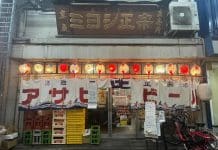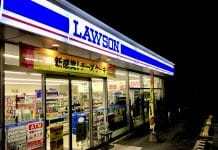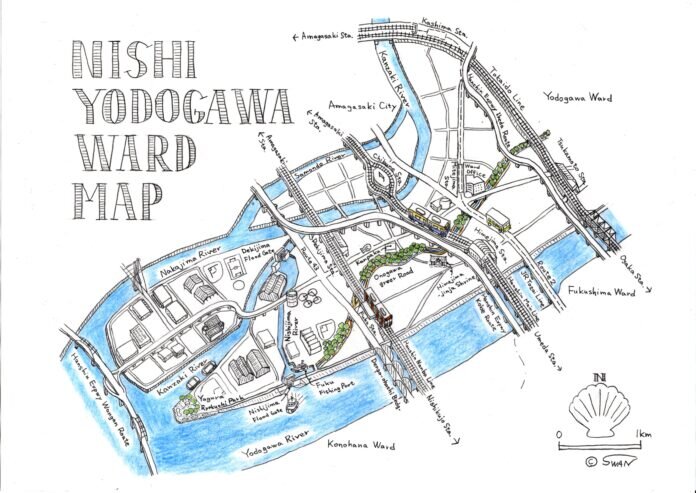
Table of Contents
Introduction
Nishiyodogawa ward locates in the northeast end of Osaka and is adjacent to Amagasaki City in the Hyogo prefecture. The Ward had been one of the most industrialized areas in Osaka with a lot of huge plants and factories, causing severe environmental threat to local community, such as waste water and air pollution. But now, the ward is very popular for an eco-friendly greenbelt, called Ohnogawa Ryokuin Doro (literally means “Ohno River, Green Shade Road”) where people can enjoy camping, surfing and variety of outdoor activities. How come?
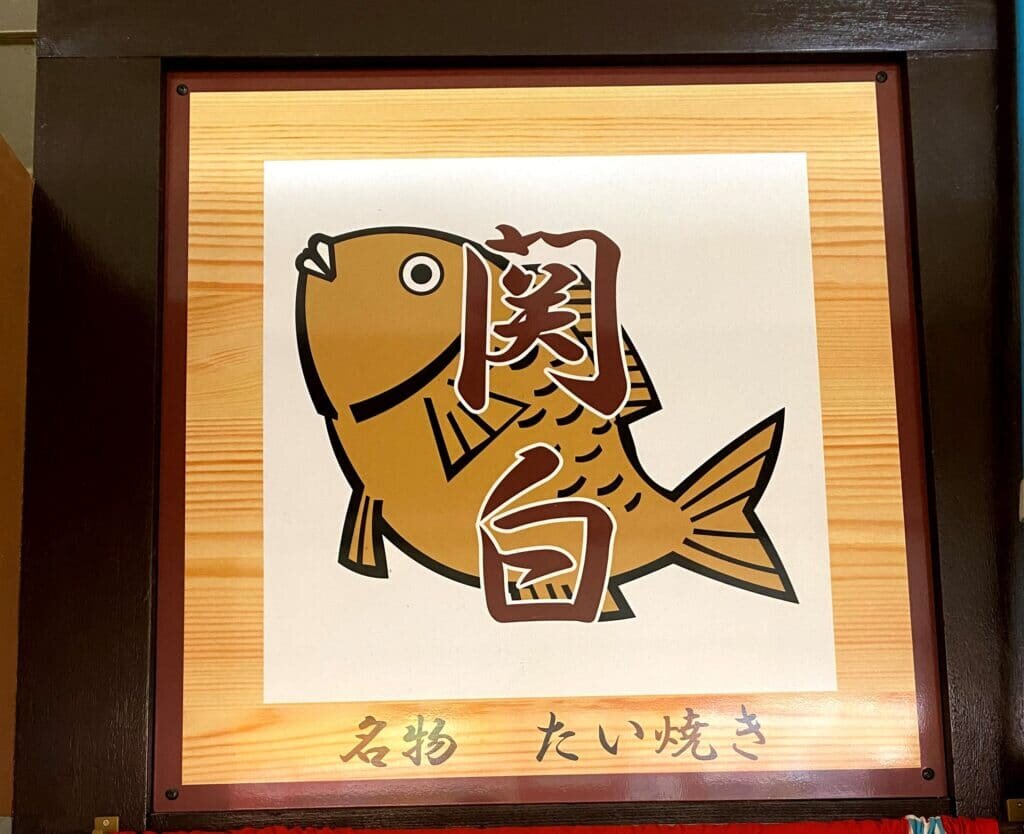
And if you are suffering from some negative relationships or bad practices wishing for them to go away, Himejima Shrine in Nishiyodogawa ward is the best place for you. Why? You can find answers in the article below.
Go for a bike ride!
Before telling about Ohono Ryokuin Doro and other unique spots in Nishiyodogawa ward, I want to tell you a good news. There are a lot of bike rental services available in Nisiyodogawa ward. For example, HELLO CYCLING offers a bike station just next to Dekijima train station in the Hanshin Line. You can register using their app, it’s very convenient.
Before telling about Ohono Ryokuin Doro and other unique spots in Nishiyodogawa ward, I want to tell you a good news. There are a lot of bike rental services available in Nisiyodogawa ward. For example, HELLO CYCLING offers a bike station just next to Dekijima train station in the Hanshin Line. You can register using their app, it’s very convenient.
In Ohnogawa Ryokuin Doro, the lanes are separated for bikes and walkers, so it’s very safe and comfortable.
Ohno Ryokuin Doro
Ohno Ryokuin Doro literally means Ohno River Green Shade Road. As the name implies, more than 100 species of trees are planted alongside the road. The road is 3.8km long and is reserved for people and bicycles. There are no cars nor traffic lights.
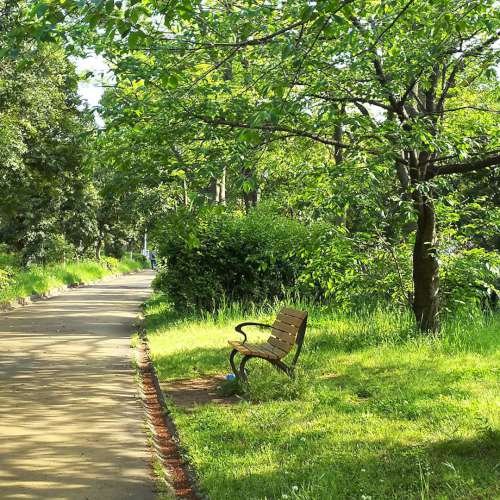
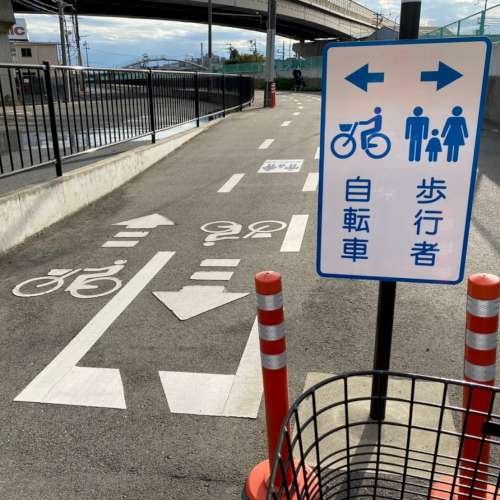
As the name implies, the zone was formerly a river called Ohno River. Many chemical and steel plants used the river for shipping and drainage. In 1970s, water pollution in Ohno River become a huge social problem, actually some people called the river as “Death River”.
So, the local government established a plan to refill the river and construct a highway. But the local people who had gravely suffered from the heavy pollution vigorously protested against the construction plan, resulting in the alteration of the plan to create a 3.8km greenbelt for pedestrians and cyclists instead. This pioneering environmentalism must be definitely a hard challenge in those days when economic effectiveness prioritized environmental issues.
You can see the mark of such people-oriented approach in the separated lanes for bikes and walkers.
In addition, Ryokuin Doro has no traffic rights. It does not cross any busy traffic roads such as Route 43, instead it goes under the roadways. In Osaka city with notoriously heavy traffic, no-signal road is very rare.
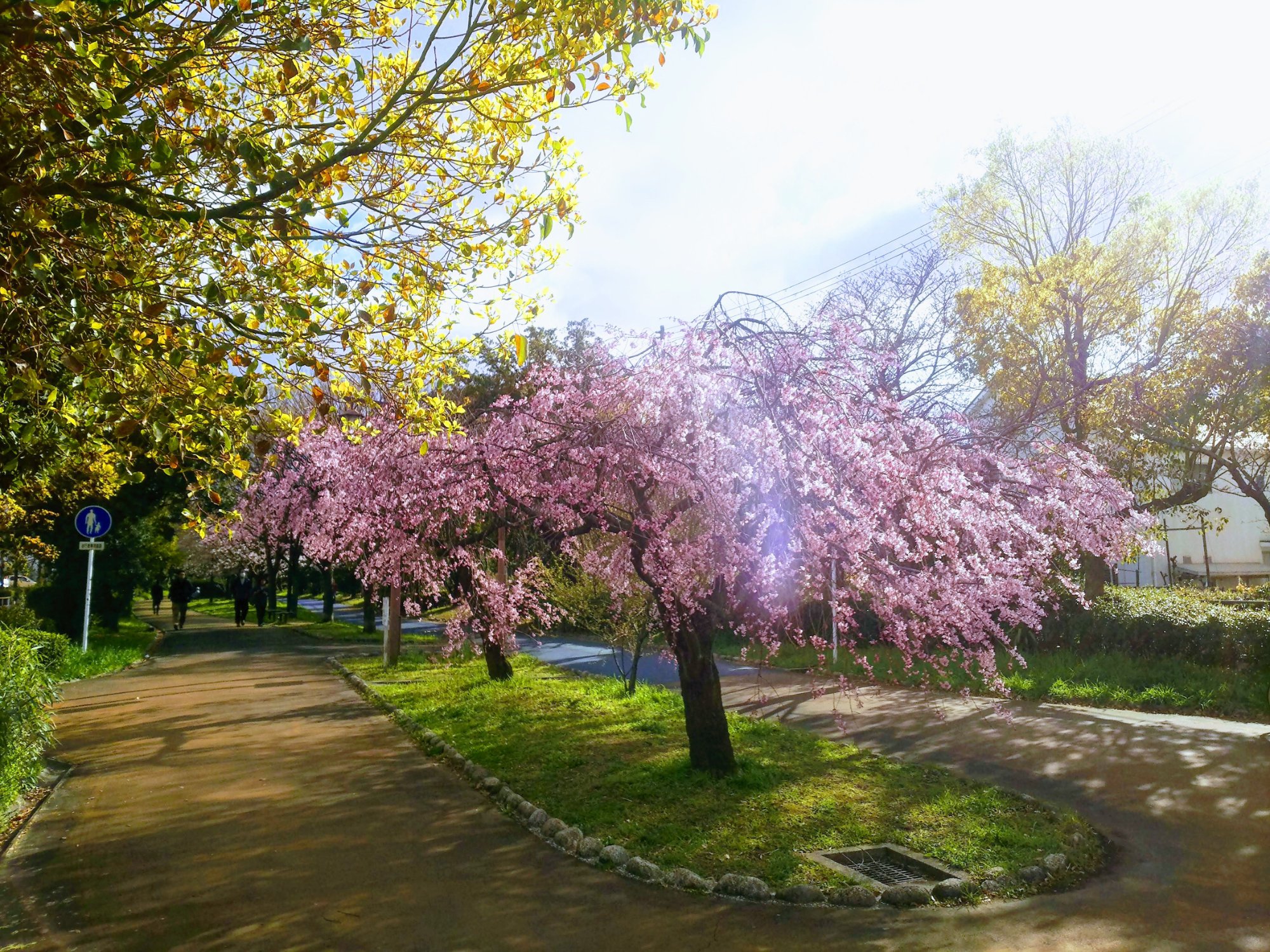
The road extends to Yodo River. The shoreline protection made of natural stones provides beautiful matches to surrounding green and blue.

Camping and surfing
Not only cycling, there are a variety of outdoor activities available. You can find camping tents in spring through autumn.
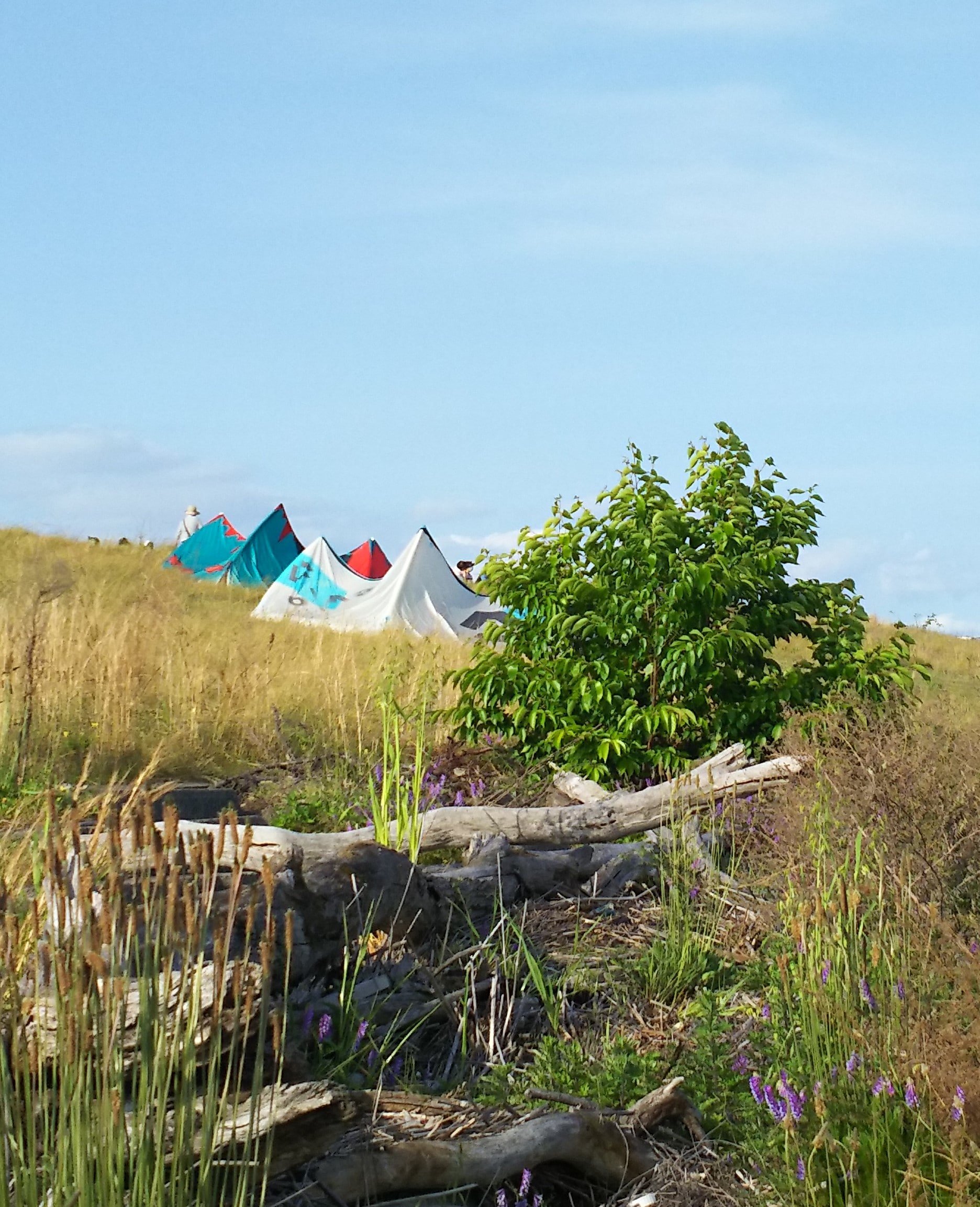

In the riverside area, fishing, surfing (kite surfing) or yachting are really enjoyable.
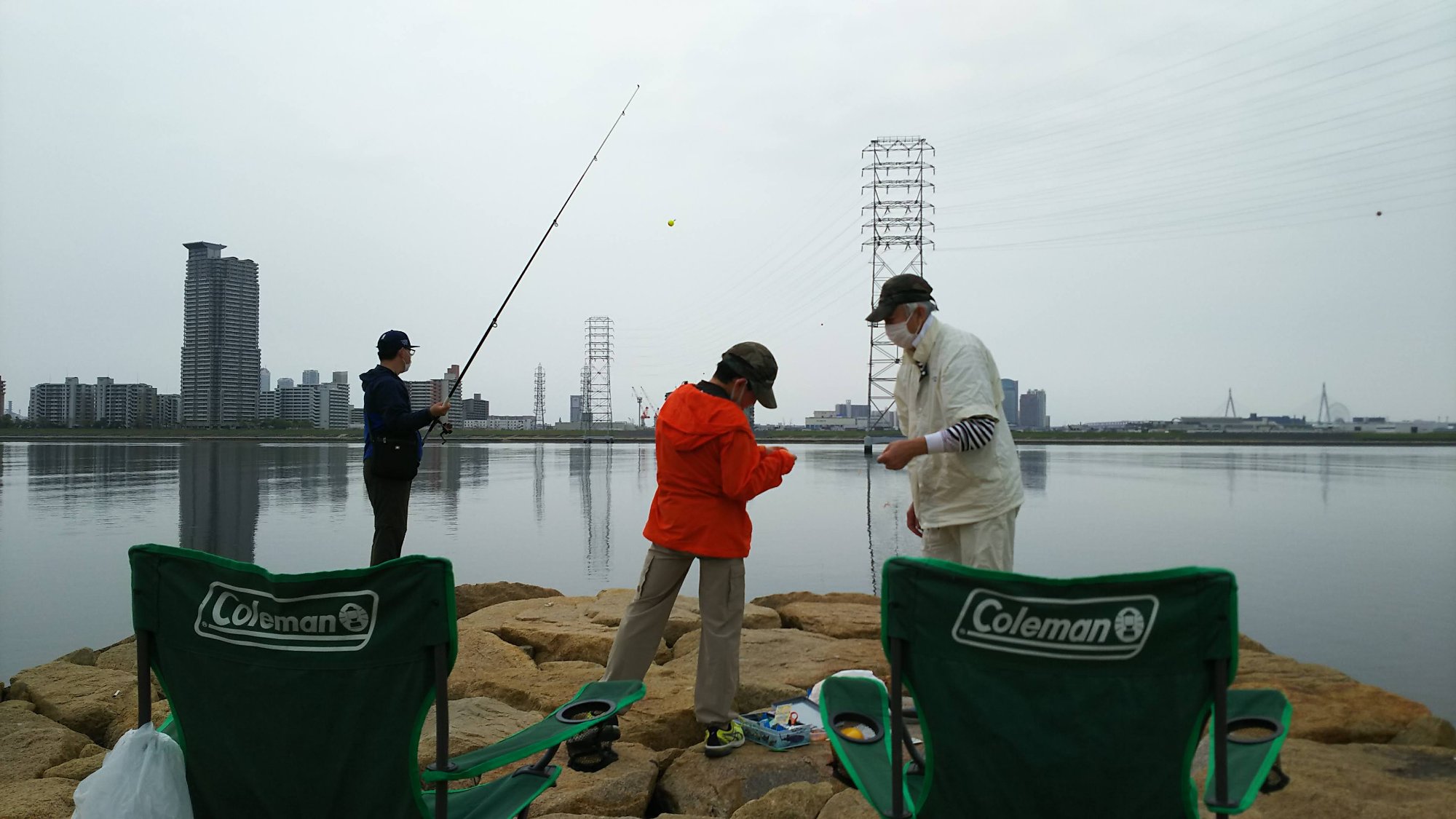
Bamboo tube in the river
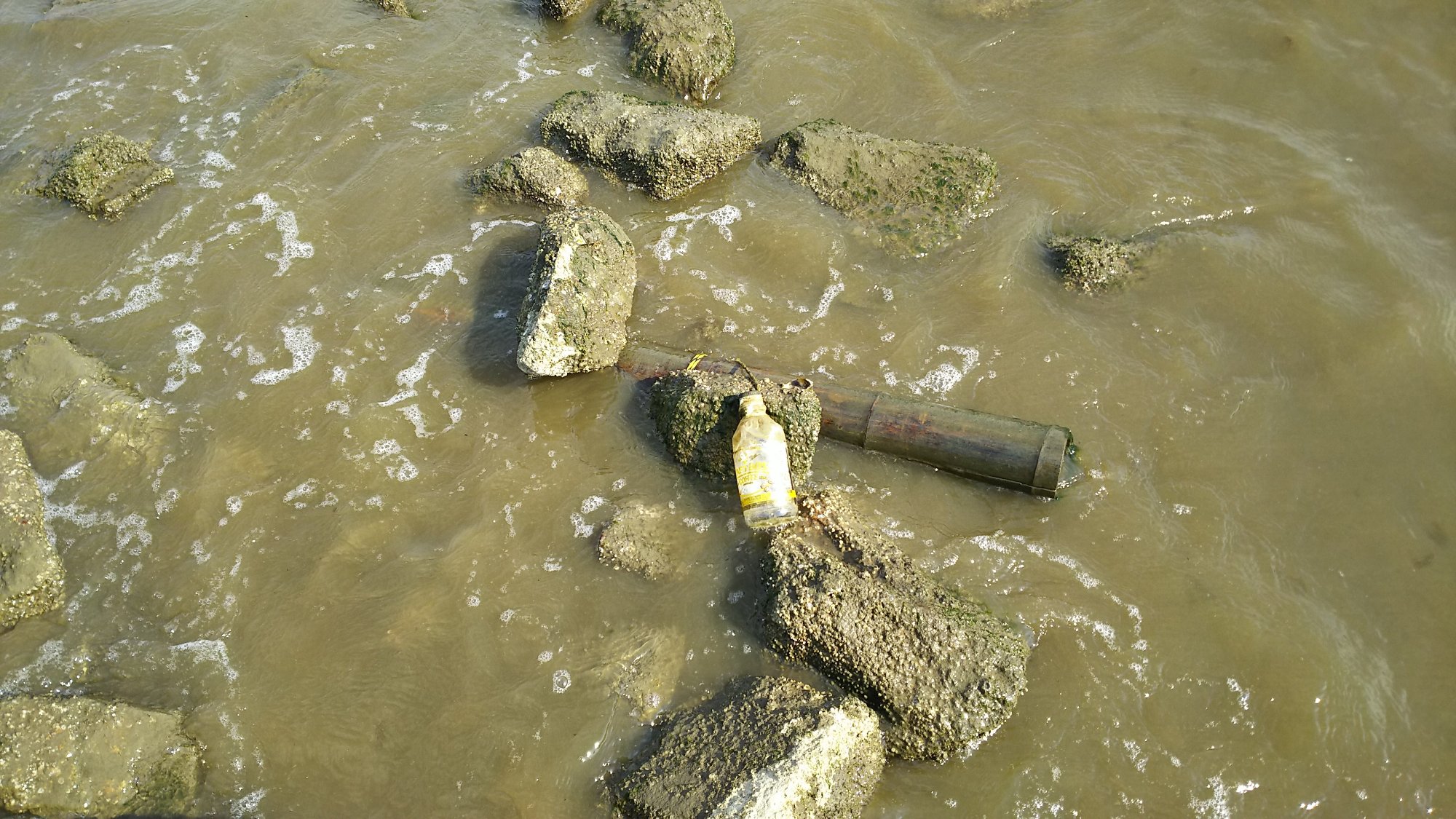

Among those fishing spots, you may find a unique gimmick in the water. What is this empty yellow PET bottle connected with a rope? The rope ties to a bamboo tube anchored in the water. Do you have any idea what are they used for?
Actually, this is a fishing gimmick for eel, taking advantage of its preference of narrower spaces. There is a trap structure inside, so once the eel enters the tube, it is trapped and can never get out. The PET bottle serves as a buoy.
Before the heavy water pollution in the 1960s, this area was a very productive fishery in Yodo River where fresh water contacts with sea water of Osaka Bay. Eels and basket crams caught in Yodo River were served in Osaka’s top restaurants in those days. In Japan, eel dishes are one of the best delicacies.
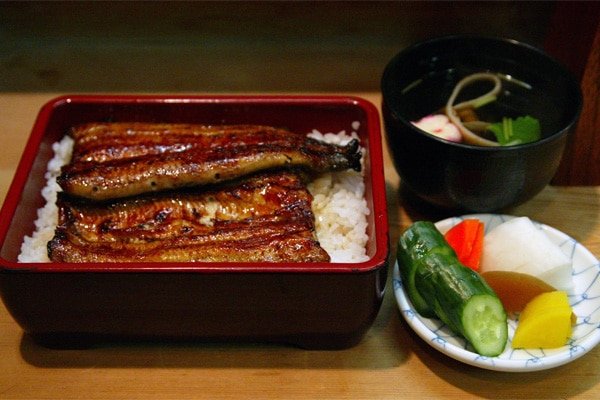
With the tremendous effort for water purification by the local people and governments, the water quality of Yodo River had improved and Osaka Fishery Association and Osaka Chamber of Commerce now actively promote eels as Yodogawa-mon (“Yodo-River-origin”). As fewer and fewer wild eels are found in Japan, the brand has become a prized commodity.

meaning “made in Yodo River.
Cited from Osaka Fishery Association
Head or tail, it is the question
.jpg)
When you feel hungry after some walk or cycling in Ryokuin Doro, it is recommended to go to eat hot Taiyaki at Kanpaku, a Taiyakai shop in Kansai Supermarket near Himejima area.
Kanpaku’s Taiyaki is surprisingly cheap, at just 50 yen each. The shop owner bakes Taiyaki in front of you, so you can enjoy a fresh hot Taiyaki. Look this delicate shape with fins and scales!

Taiyaki is one of the soul foods for Japanese, like Takoyaki. Takoyaki is Tako (octopus) + Yaki (baked), so Taiyaki is Tai (sea bream fish) + Yaki (baked). The main differences are that Takoyaki contains a slice of Tako and it is just a round shape, while no fish is included in Taiyaki but it shapes like a real fish with fins and scales.

Tai indicates a word “Medetai” meaning “fortunate” and “happy” in Japanese. A whole Tai with its head and tail is often served for very special occasions, such as weddings or other anniversaries because it represents integrity and preciousness. This unique traditional perception explains why Taiyaki is loved by Japanese people.
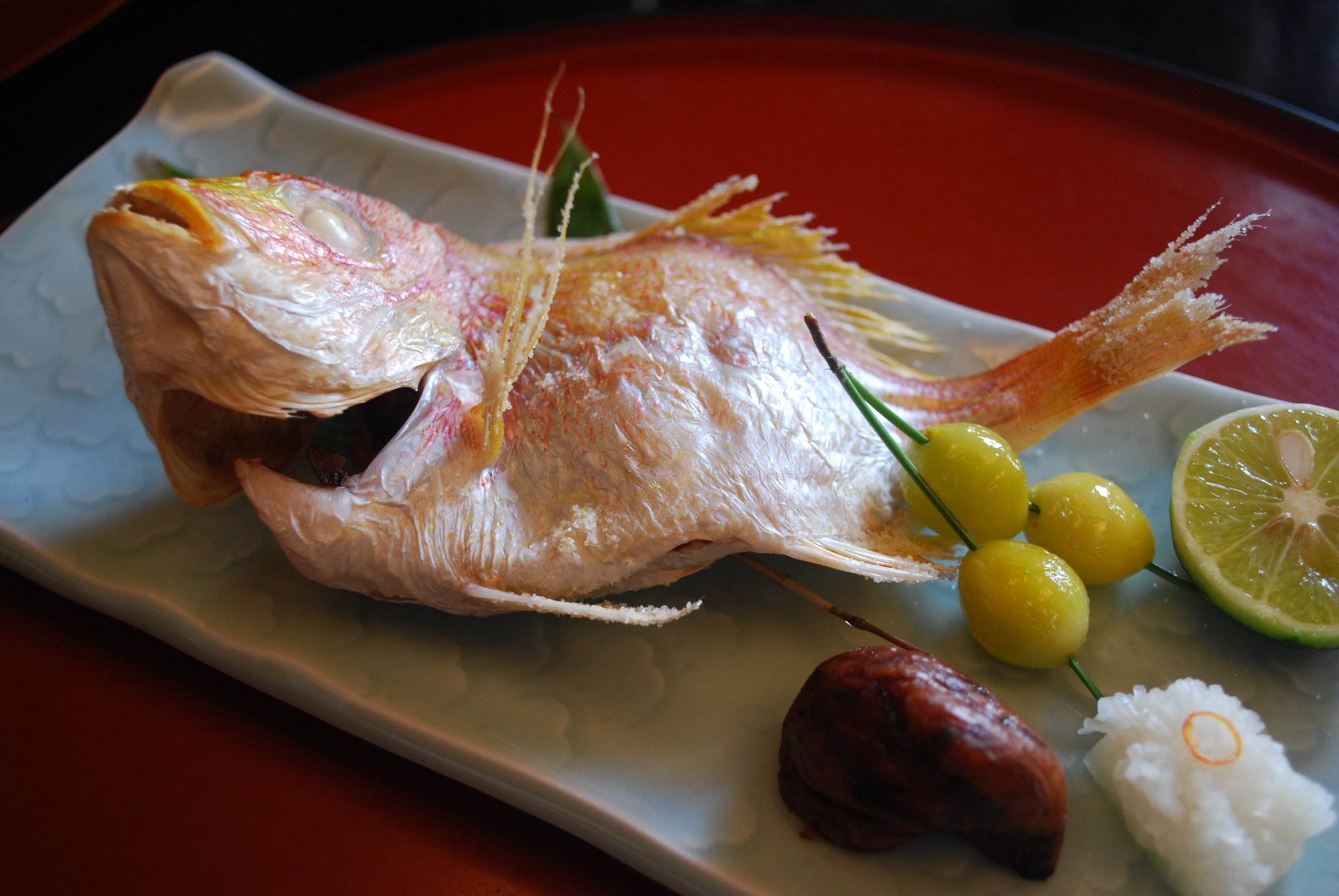
The biggest question about Taiyaki is “from which end you eat it”? Please ask your Japanese friend: “do you eat Taiyaki from the head or the tail? “. Each Japanese has his or her own answer, even small children has their preferences.
Some likes to eat from the head, because they think the head is the top part and eating from the top is the natural order when eating anything, but “tailers” insist that they want to eat the part with less Anko first. Anko is the red bean paste inside Taiyaki. The tail part often contains less Anko paste due to the limited space. So they eat the tail first and then enjoy rich Anko in the head.
There are others saying that having the fish eyes staring at them when they eat is horrifying and unbearable, so they eat the head first.
So, it’s your turn: do you eat from the head or the tail? Try it at Kanpaku at Owada, Nishiyodogawa (please note that Kanpaku is a tenant store in Owada branch of Kansi Supermarket).
Himejima Shrine
In Nishiyodogawa ward, there’s Himejima Jinjya, also known as the “Re-start” shrine. The body of the shrine is Akaru Hime, a beautiful princess born from a red sphere.
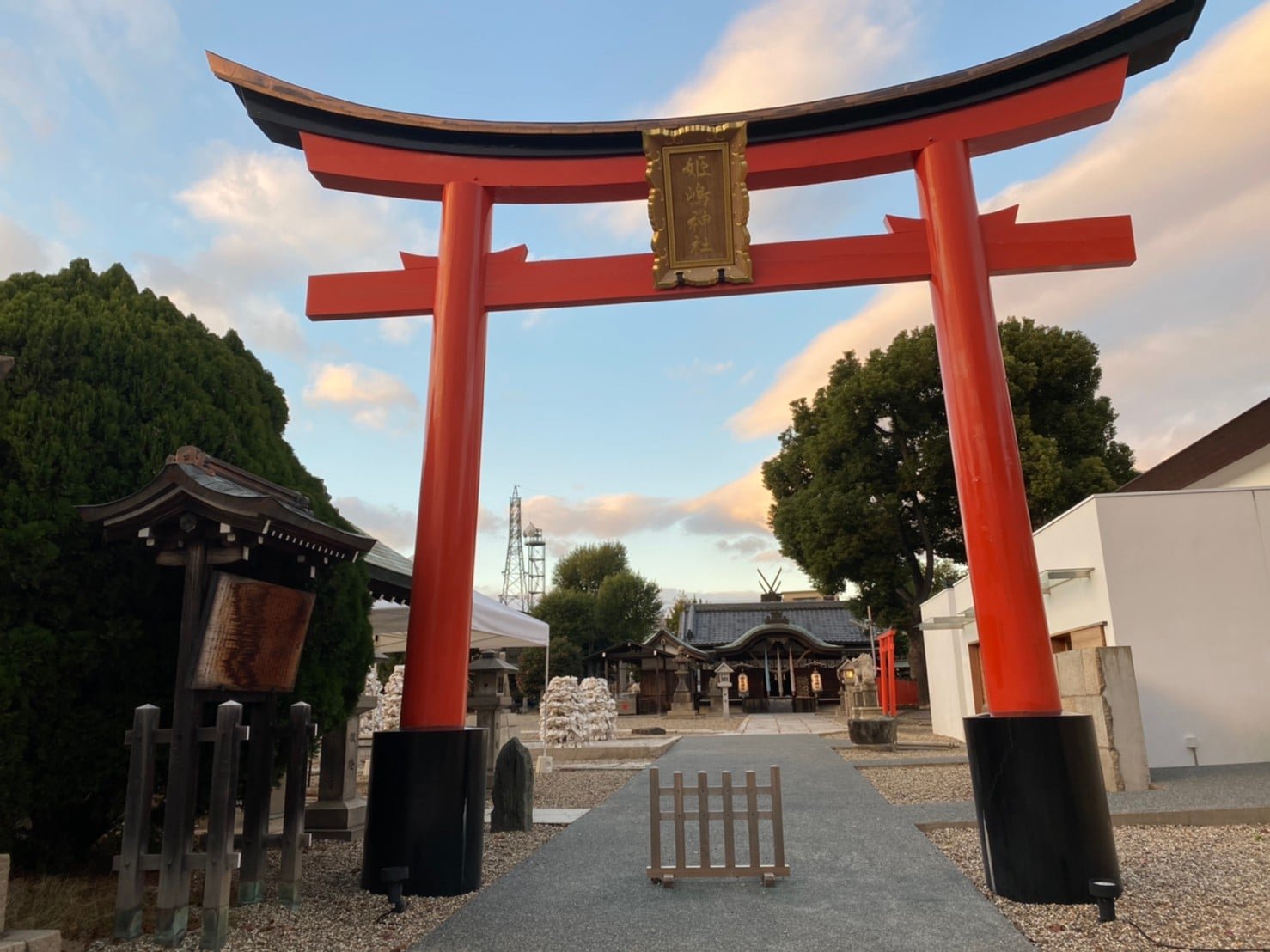
She dedicated herself to her husband, but he was a very deceitful man and disgraced Akaruhime. Finally, she fled from him and after indescribable hardship she finally reached Himejima where she decided to start a new life. She taught sewing, weaving, pottery and playing music to local women.
People admired her as a person of action and determination. They later enshrined her. So, the shrine is now called “Re-start (Yarinaoshi in Japanese)” Shrine. In a prayer in the shrine, people can embrace their present struggle and look beyond it for promising future.
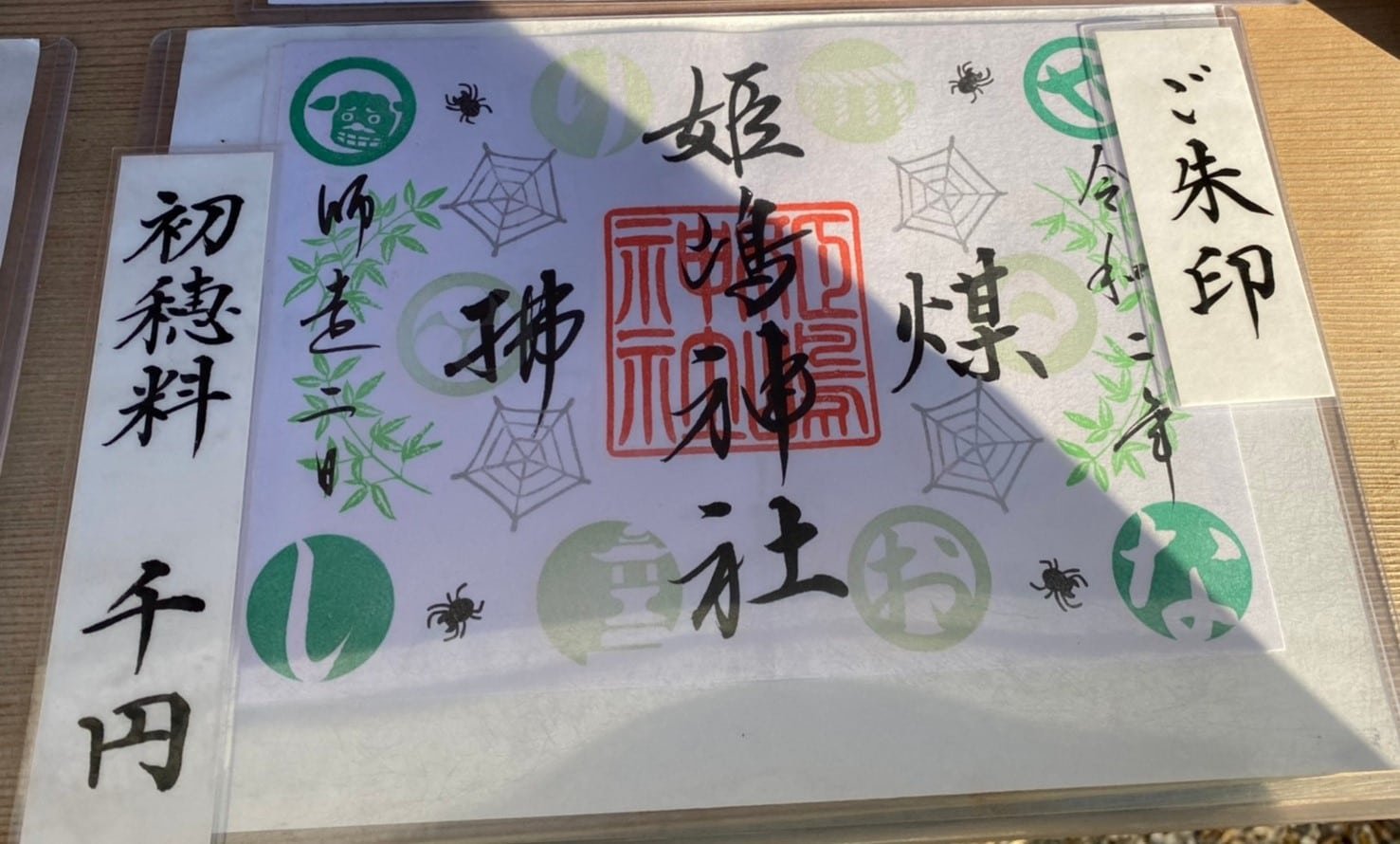
You may recognize Goshuin (shrine stamp) if you have visited Japanese shrines. People collect and keep as many Goshuin as possible in a special notebook called Goshuincho because it represents good fortune.
Majority of shrines offer a single fixed design of Goshuin, mostly red stamps, as Goshuin literally means “red seal”, but in Himejima Shrine, a variety of colorfully-designed Goshuin are available. Especially, limited editions of special occasions (e.g. first day of each month, Summer Festival Day or other anniversaries) are very popular, attracting returning visitors to the shrine.

Himejima has other unique traditions. Their Ema (a tablet people write their wish and hung it in shrine’s wall for making it come true) is made of real scallop (Hotate shell). Usually, Ema is made of wood and house-shaped pentagon.

The word Hotate (scallop) represents “raise a sail (Ho wo Tateru)”, so scallops symbolize the determined sailing by Akaruhime which resulted in a great success.
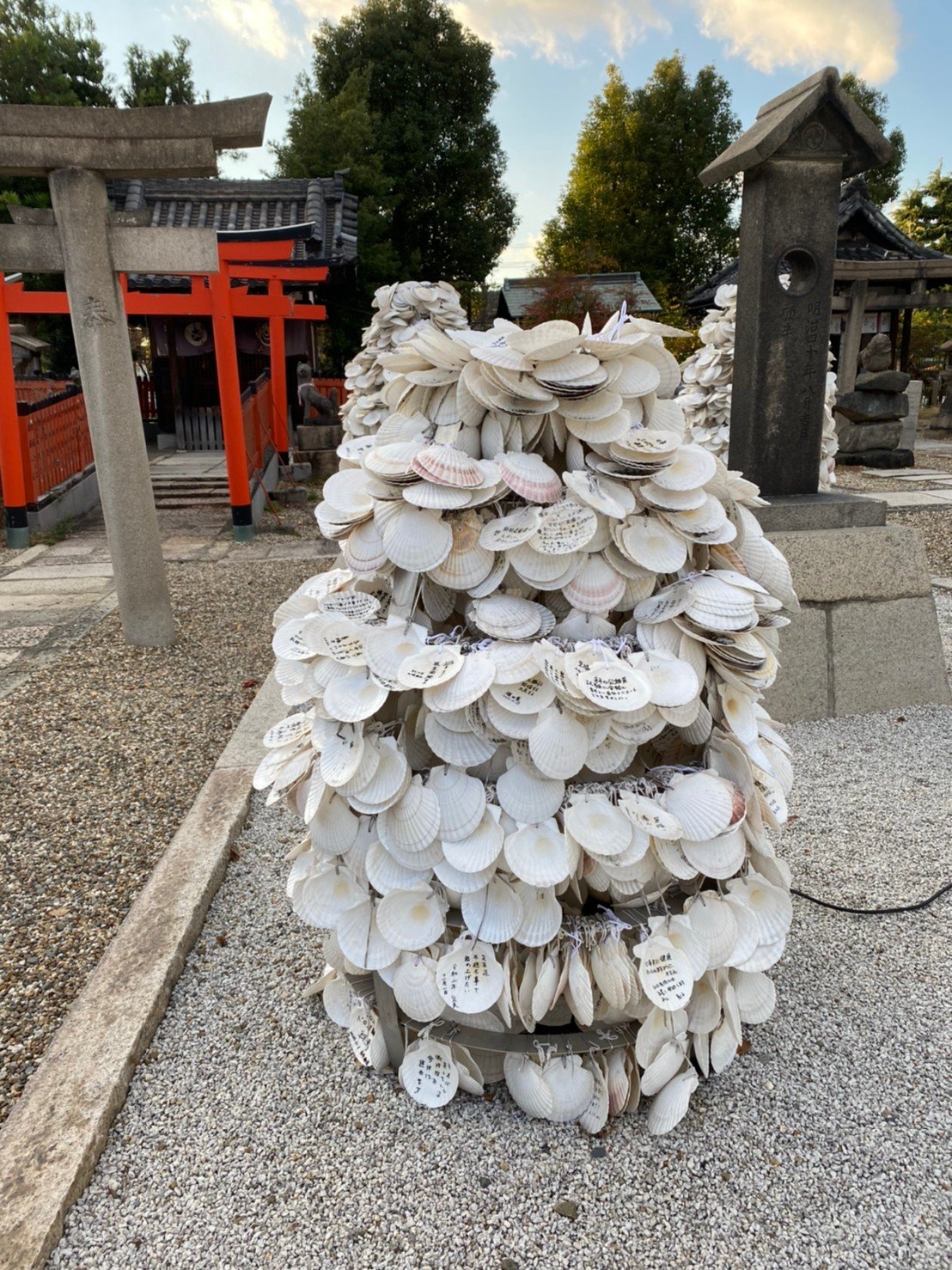
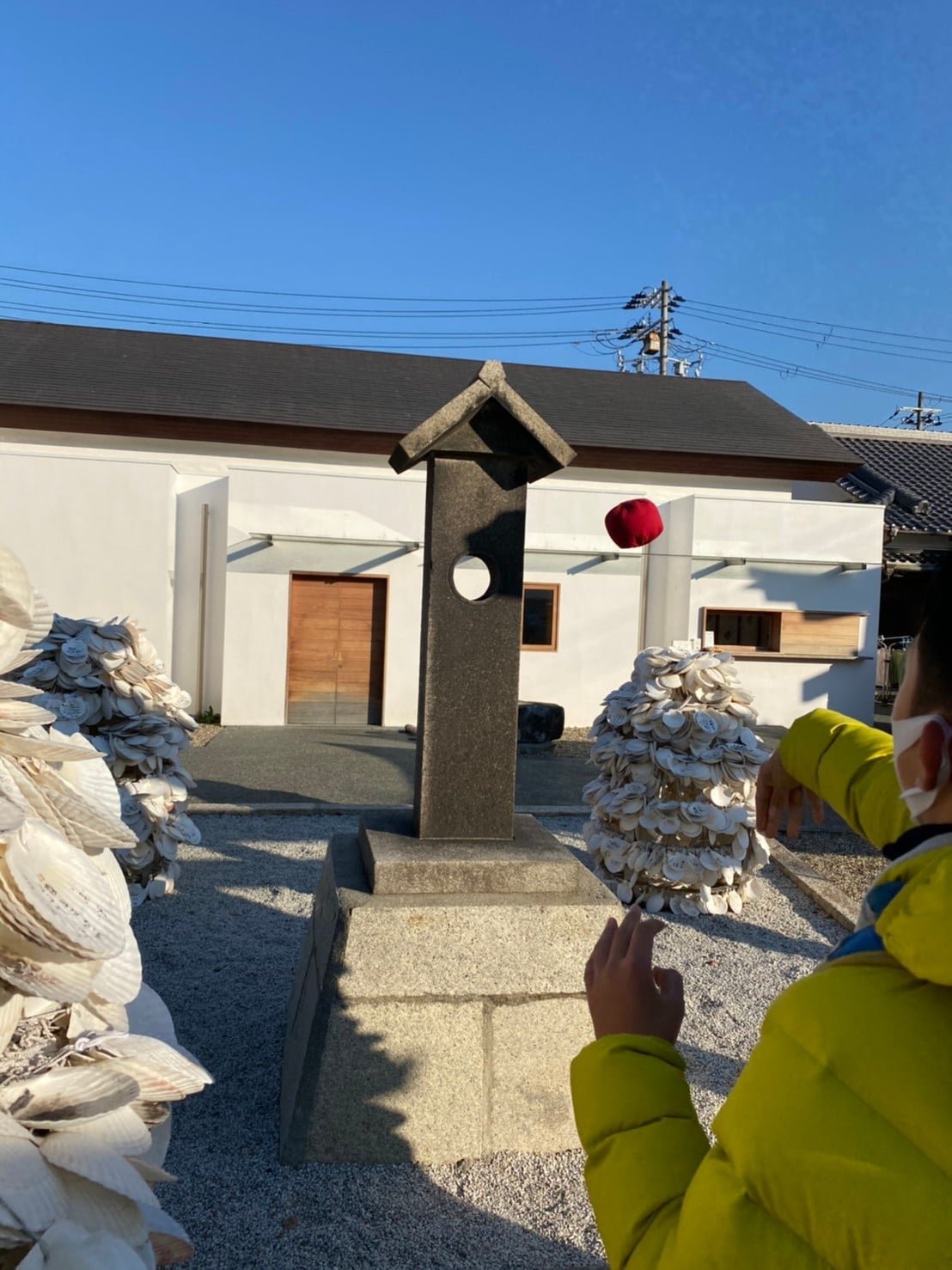
Tachidama literally means a “break off ball” and the red ball implies a sacred red sphere where Akaruhime was born. When you are determined to start a new life like Akaruhime, you must break away from your negative past, such as bad habits or timid mindset. Tachidama will help you throw them away forever.
When you throw Tachidama towards a stone monument called “Hajimari no Hi (Monument of Beginning)” and the ball successfully passes through the hole on the top, your negative past should be confined forever in the monument and you will be freed of the bad practices. It’s the time for a new beginning!






